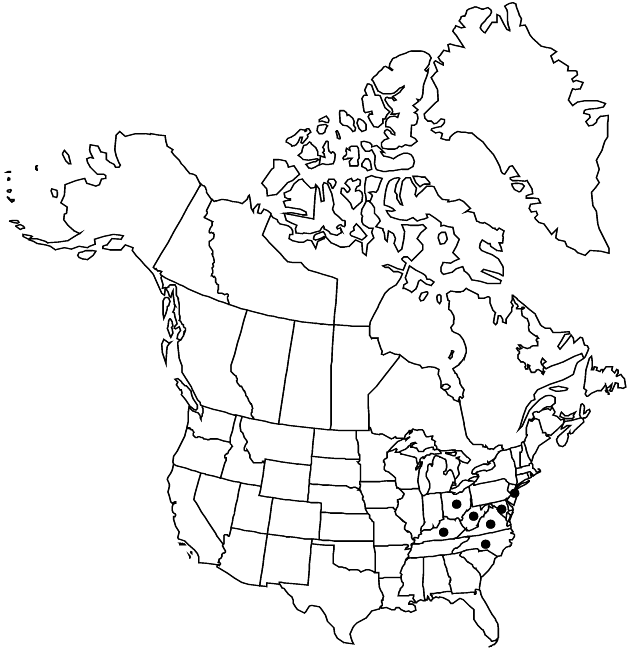Eupatorium godfreyanum
Brittonia 37: 238, fig. 1. 1985.
Perennials, 60–100+ cm. Stems (from short caudices) single or multiple, sparsely branched distally, puberulent throughout. Leaves usually opposite (distal sometimes alternate, spreading or horizontal); sessile; blades pinnately nerved, elliptic or lance-ovate to narrowly ovate, 50–100 × 15–40 mm, bases rounded to cuneate (not connate-perfoliate), margins serrate, apices acute, faces puberulent or villous, gland-dotted. Heads in corymbiform arrays. Phyllaries 7–10 in 2–3 series, lanceolate (tapering at tips), 2–6 × 1–1.5 mm, apices acute, not mucronate, abaxial faces puberulent, gland-dotted. Florets (4–)5; corollas 3–3.5 mm. Cypselae 2–3 mm; pappi of 20–50 bristles 3.5–4.5 mm. 2n = 30, 40.
Phenology: Flowering Jul–Sep.
Habitat: Dry, open, disturbed sites, edges of deciduous woods
Elevation: 20–300+ m
Distribution

Ky., Md., N.J., N.C., Ohio, Va., W.Va.
Discussion
Eupatorium godfreyanum is an apomictic polyploid derivative that includes genomes from E. rotundifolium and E. sessilifolium. Although it is relatively narrow in distribution, it is known to occur in localities where both progenitor species are absent and it seems to be persistent where it occurs. Eupatorium vaseyi Porter has been misapplied to E. godfreyanum.
Selected References
None.